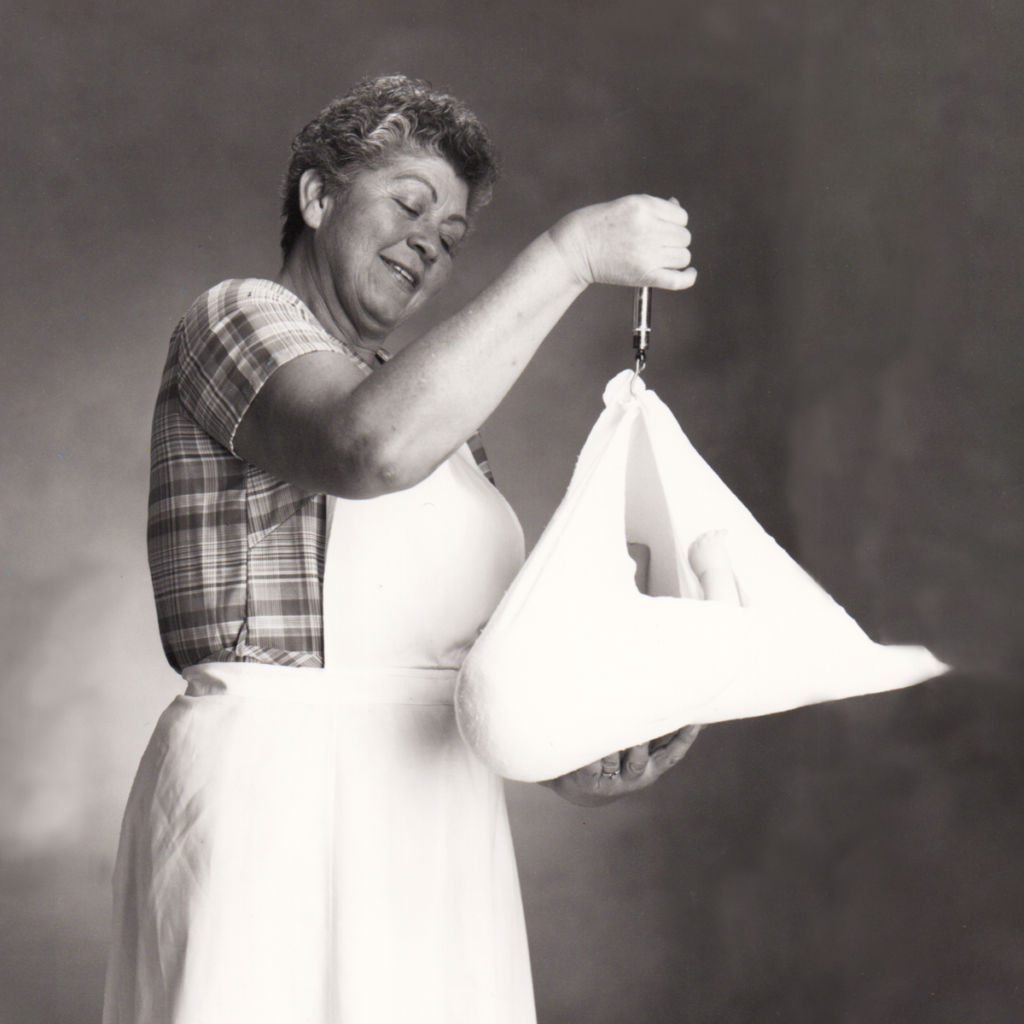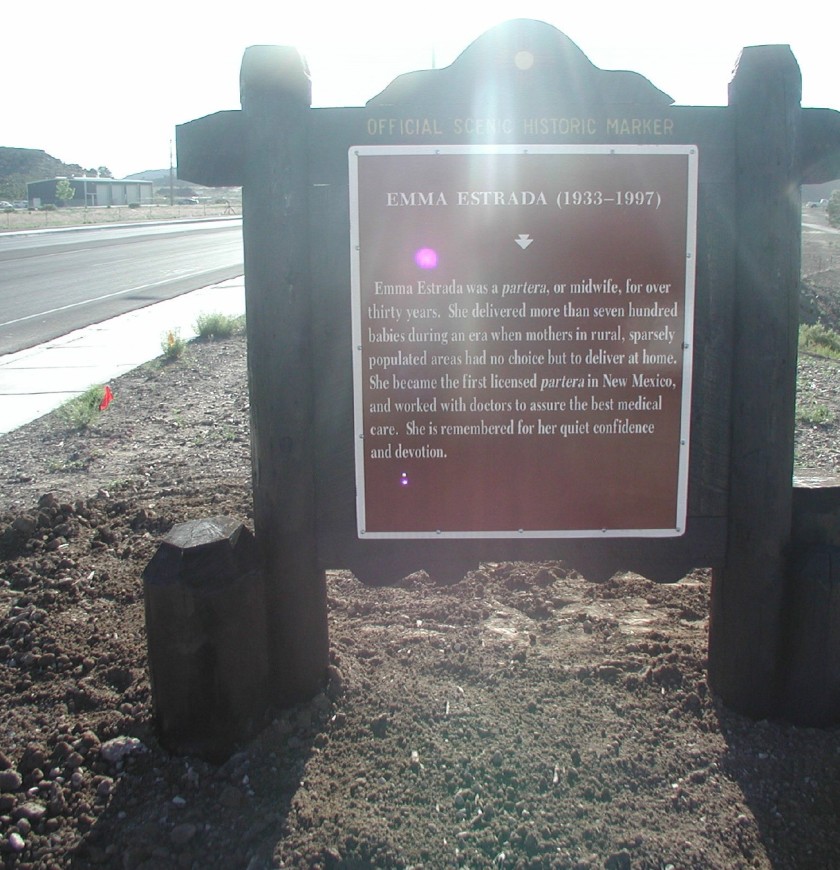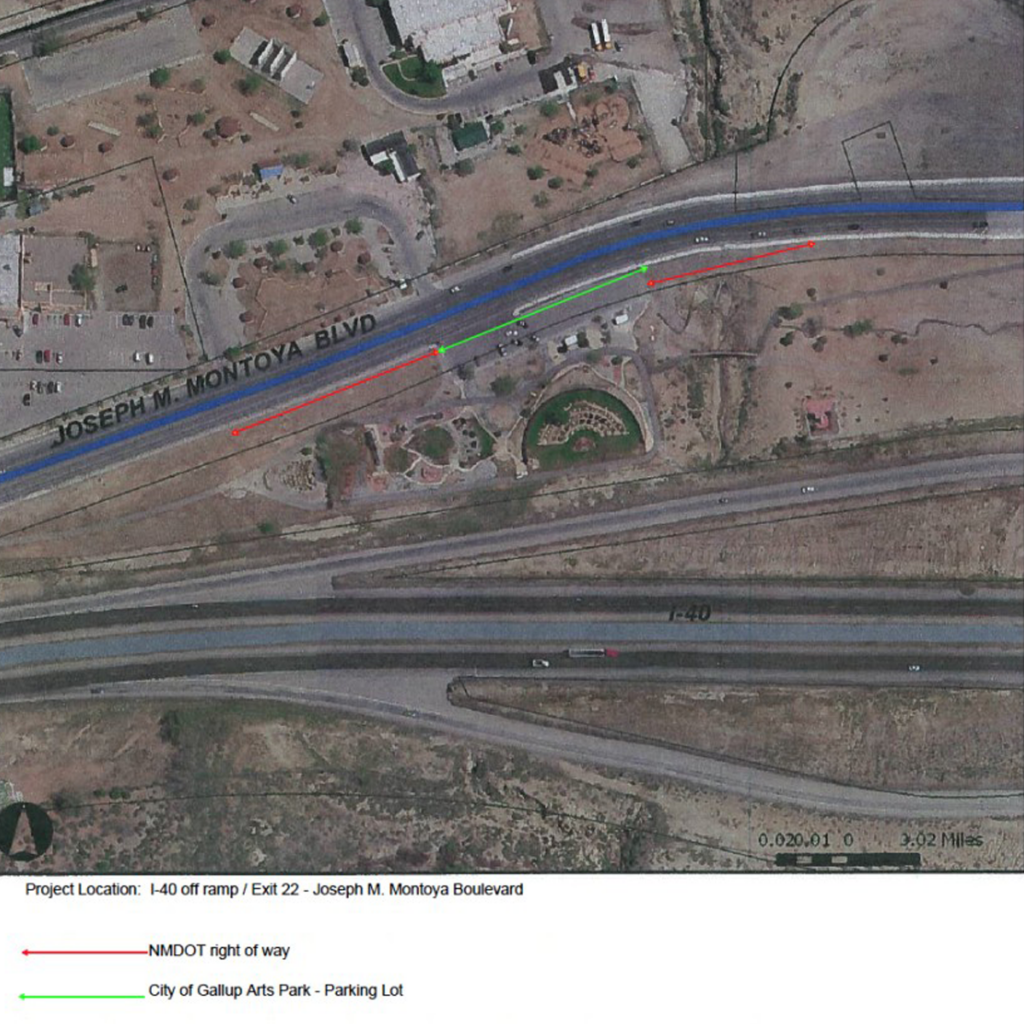Emma Estrada.
Photo Credit: Courtesy of New Mexico Historic Women Marker Program. Courtesy of New Mexico Historic Women Marker Program.
Emma Estrada, Parteras of New Mexico
1933 - 1997
McKinley County
A traditional partera (midwife), her willingness to work closely with the medical profession and become licensed was unique. Estrada and others like her were the incentive for a program to formally train, qualify, and license midwives at the University of New Mexico’s School of Nursing.
Prior to the arrival of the United States Army in 1846, no known doctors are known to have practiced in New Mexico. After that, a combination of vast distances and sparse, rural population in New Mexico contributed to a continued shortage of trained medical practitioners in the area. The majority of births in New Mexico occurred without doctors well into the twentieth century. Midwives, called parteras in Spanish, assisted with the birthing process. In Spanish and Native American societies many of these women were also curanderas, people whose knowledge of local herbs and natural cures along with religion, qualified them as local healers.
Midwifery is still common in New Mexico. Emma Estrada is one example of a woman who assisted in the birthing process almost to the end of the twentieth century. She learned her trade from two other parteras and started practicing in the early 50s. In 1954, she obtained her first license to practice her trade from the State of New Mexico. Thirty-four years later, she estimated that she had attended some 700 births in the Gallup area.
Estrada worked closely with the medical profession. For example, her willingness to be licensed was unique. In 1989, the Public Health Division of the State of New Mexico recognized her with a certificate of appreciation for “becoming the only partera to become a fully licensed midwife.” In September 1996, she renewed her license a year before her death. She also consulted with doctors and would not agree to assist in a birth without a doctor’s permission. In Gallup, the doctor issued a card to the patient who had to present it to the midwife. Estrada said she “wouldn’t do a delivery unless I had the card.”
Estrada and others like her were the incentive for a program to formally train, qualify, and license midwives at the University of New Mexico’s School of Nursing. In recognition of the inadequate number of care providers in New Mexico, the faculty used an existing program in Kentucky as a model to help convince the state legislature to support a midwifery program. The legislature funded UNM’s request in 1990.
Estrada is fondly remembered in the Gallup area but her influence extended far beyond the area where she worked to benefit the State of New Mexico and its leading university.
Sources:
Newspaper clippings:
The Gallup Independent, 7 May 1988.
“Modern Midwives Prove Valuable to New Mexico,” The Albuquerque Journal, n.d.
“Veteran Gallup midwife sees changing customs,” You Made the News, n. d.
Documents:
Stephen & Carol Ingraloon & Family to Raymond Estrada [Emma’s son], 16 April 2001.
License to Practice Midwifery, State of New Mexico, Department of Health, Emma Estrada, 17 September 1996
Certificate of Appreciation, The Health and Environment Department, Public Health Division, 19 January 1989. For “becoming the only partera to become a fully licensed midwife.”
Interview:
With Raymond Estrada, November 3, 2008.
Directions:
Emma Estrada, Parteras of New Mexico
McKinley County
Community leader | Educator | Healer |
Mexican Period (1821 - 1848) | Spanish Colonial (1540 - 1821) | Statehood (1912 - present) | Territorial Period (1848 - 1912) |
Northwest









